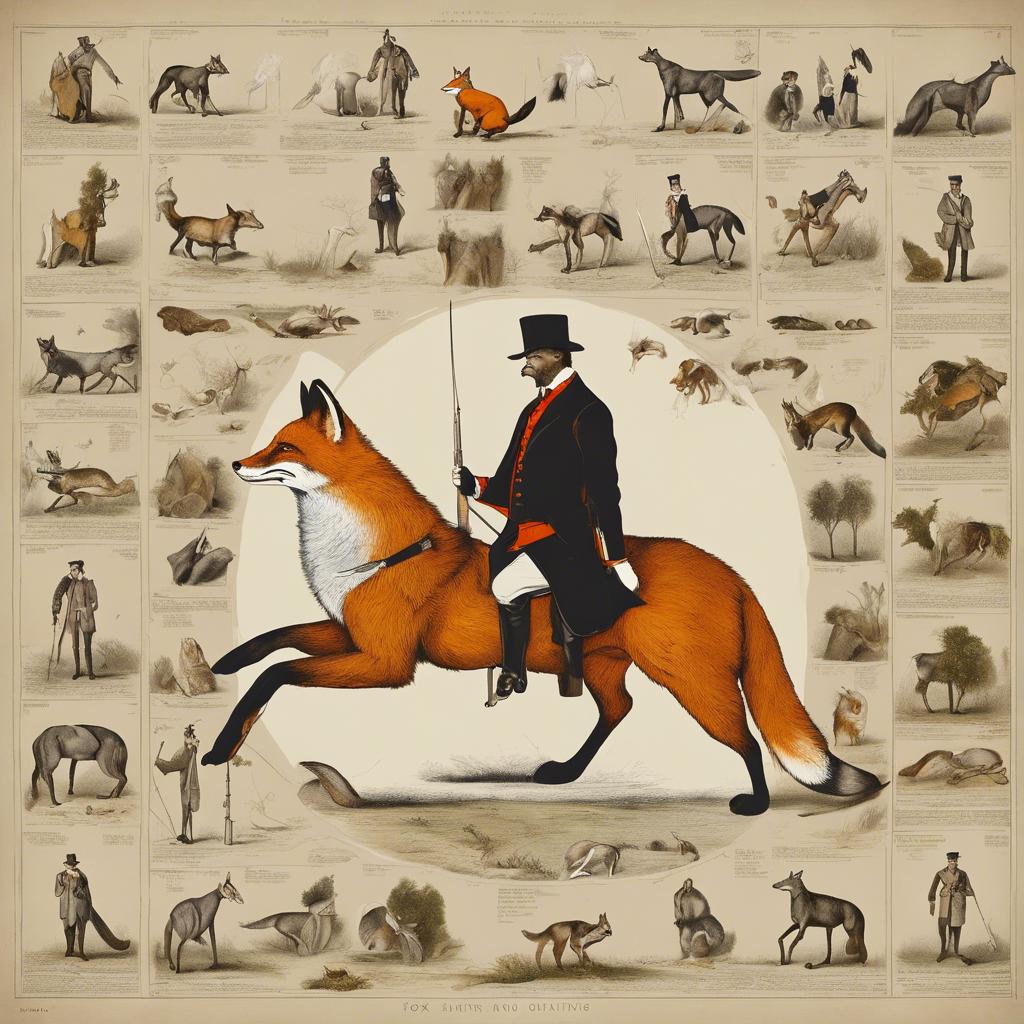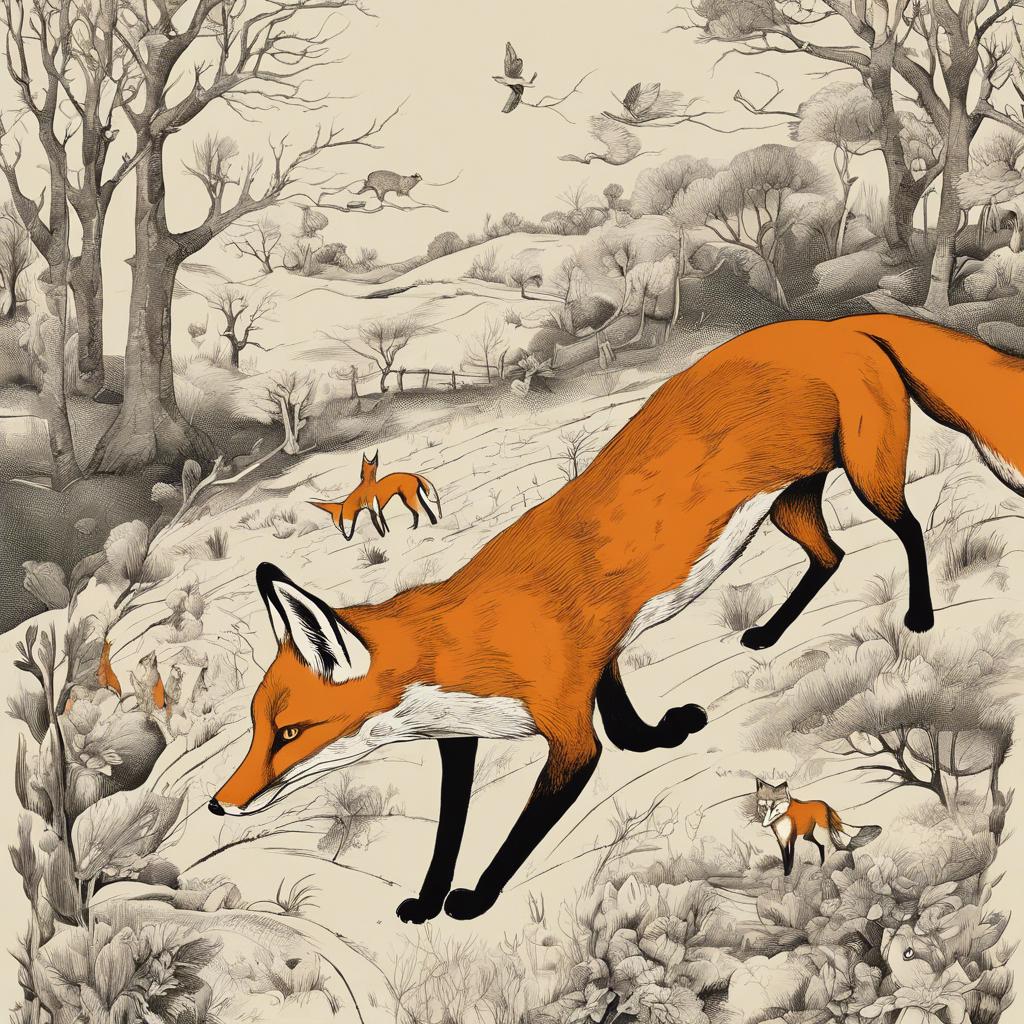For centuries, the elusive and cunning fox has captivated the imaginations of hunters and sportsmen alike. The tradition of fox hunting dates back to medieval Europe, where it evolved from a practical means of controlling fox populations to a prestigious and highly-regarded sport among the aristocracy. In this article, we delve into the rich history and cultural significance of the fox hunt, exploring its origins, techniques, and enduring appeal. Join us as we journey through the centuries to uncover the time-honored tradition of the fox hunt.
Step Into the World of Cheryl Bolen
Dive into the enchanting stories of love, intrigue, and elegance set in the Regency Era. Cheryl Bolen's novels offer timeless romance and captivating tales that will leave you wanting more.
Explore Cheryl Bolen's Books Now
Origins and Evolution of Fox Hunting
Fox hunting has a long and storied history that dates back to the 16th century in England. Originally, fox hunting was a sport reserved for the aristocracy and was a way for the wealthy landowners to showcase their hunting skills and prowess. The sport involved a pack of hounds being led by mounted hunters on horseback, working together to track and chase down a fox.
Over the centuries, fox hunting evolved from a practical form of pest control to a formalized sport with its own set of rituals and traditions. The development of the modern fox hunt can be attributed to Hugo Meynell, who is considered the “father of fox hunting.” Meynell introduced the concept of the fox hunt as we know it today, with the use of specialized hounds bred for their tracking and hunting abilities.
Despite its long and rich history, fox hunting has faced controversy in recent years due to concerns about animal cruelty. In 2005, a ban on traditional fox hunting with hounds was implemented in England and Wales, leading to a shift towards drag hunting, where hounds are trained to follow an artificially laid scent trail instead of chasing live foxes. While the sport has adapted to these changes, the debate over the ethics of fox hunting continues to this day.
Key Elements of a Traditional Fox Hunt
In a traditional fox hunt, there are several key elements that have been cherished and upheld for generations. One of the most important aspects is the gathering of riders, hounds, and support staff before setting off on the hunt. This gathering, known as the meet, typically takes place at a designated location where participants can mingle and socialize before the excitement begins.
Once the hunt is underway, the hounds play a crucial role in tracking down the scent of the fox. These well-trained dogs work together to follow the trail left by the fox, leading the riders on a thrilling chase through fields, forests, and across various terrains. The sight and sounds of the hounds in pursuit create an electrifying atmosphere that is truly unique to a traditional fox hunt.
Another essential element of a traditional fox hunt is the horn. The sound of the hunting horn is a distinctive part of the hunt, used to signal various commands and communicate with the riders and hounds. The skilled huntsman or Master of Foxhounds typically carries the horn, which adds to the overall ambiance and tradition of the hunt.
Modern Trends and Controversies in Fox Hunting
have sparked heated debates among animal rights activists, hunters, and the general public. Despite its long history as a traditional sport in many countries, fox hunting has come under scrutiny in recent years for its perceived cruelty towards animals. The use of dogs, horses, and traditional hunting techniques has raised ethical concerns about the treatment of foxes.
One of the major trends in modern fox hunting is the shift towards more humane practices, such as drag hunting. This simulated form of hunting involves following a scent trail laid down beforehand, eliminating the need to chase and kill live animals. Drag hunting has gained popularity as a way to preserve the tradition of hunting while reducing harm to wildlife.
Controversies surrounding fox hunting also extend to issues of class and social status, with some critics arguing that it perpetuates elitism and exclusivity. The debate over fox hunting often reflects broader societal divisions and values, making it a complex and multifaceted topic that continues to be hotly contested.
Best Practices for Sustainable and Ethical Fox Hunting Practices
When participating in fox hunting, it is crucial to uphold sustainable and ethical practices to ensure the wellbeing of both the foxes and the environment. One of the best practices to follow is to always obtain proper permits and permissions before engaging in any hunting activities. This helps regulate the population of foxes and prevents overhunting in certain areas.
Furthermore, it is important to make use of non-invasive and humane hunting methods, such as using scent trailing instead of relying on dogs to chase the foxes. This reduces the stress and harm inflicted on the animals, promoting a more ethical approach to hunting. Additionally, hunters should always prioritize the safety of both the animals and themselves during the hunt.
Another key aspect of sustainable fox hunting is to minimize waste and environmental impact. Hunters should strive to leave minimal trace of their presence in the hunting grounds, disposing of any waste properly and respecting the natural habitat of the foxes. By following these best practices, hunters can enjoy the sport of fox hunting while also contributing to the conservation and protection of wildlife.
Key Takeaways
the fox hunt has a rich history dating back centuries, tracing its origins to the English countryside. While the sport has evolved over time, with advancements in technology and changing societal attitudes towards animal welfare, it remains a cherished tradition for many enthusiasts around the world. Through its intricate rules, elaborate etiquette, and enduring appeal, the noble pursuit of the fox hunt continues to captivate and inspire individuals to this day. And as we reflect on its storied past, we are reminded of the timeless elegance and camaraderie that define this timeless pursuit.


